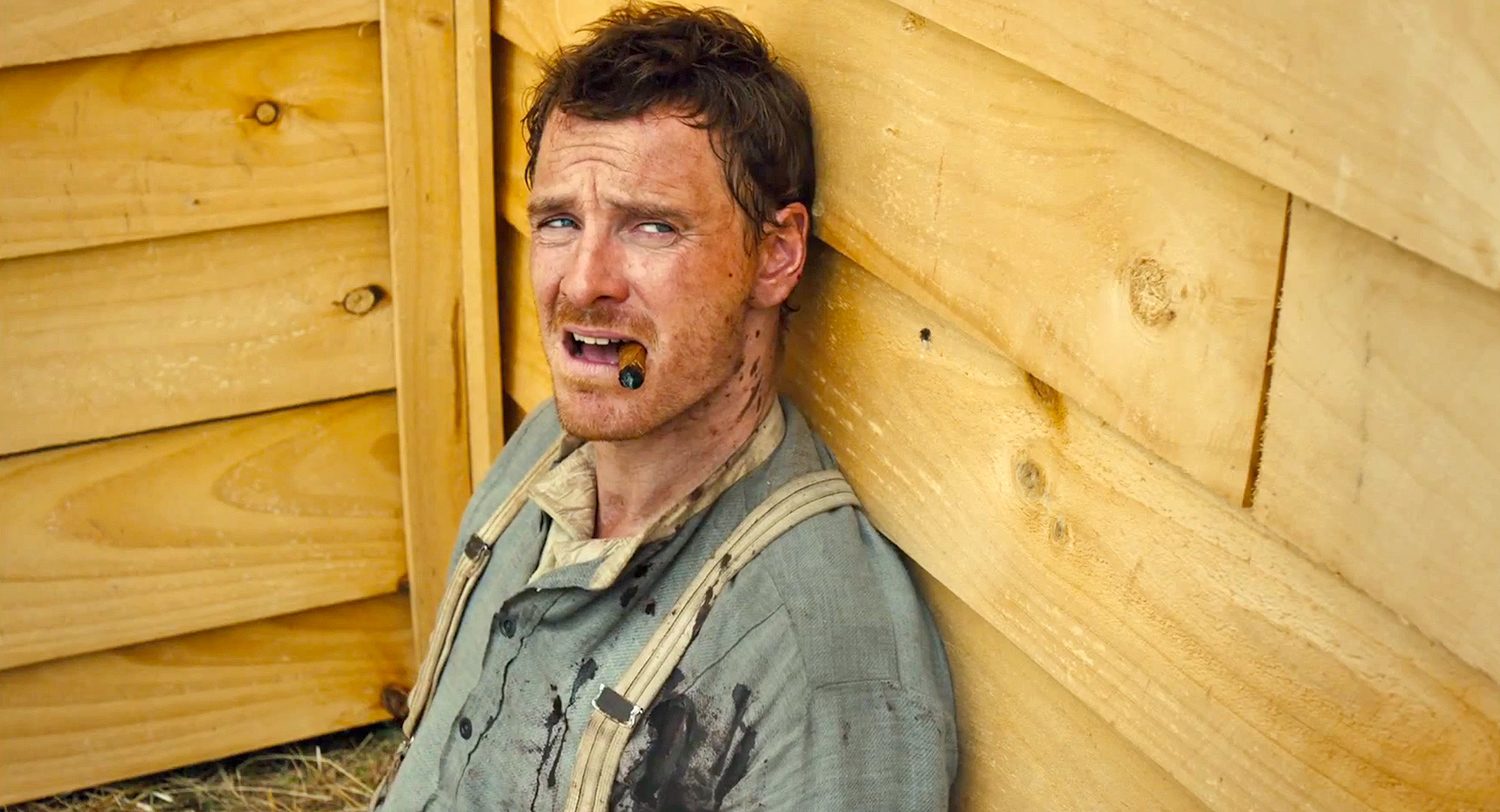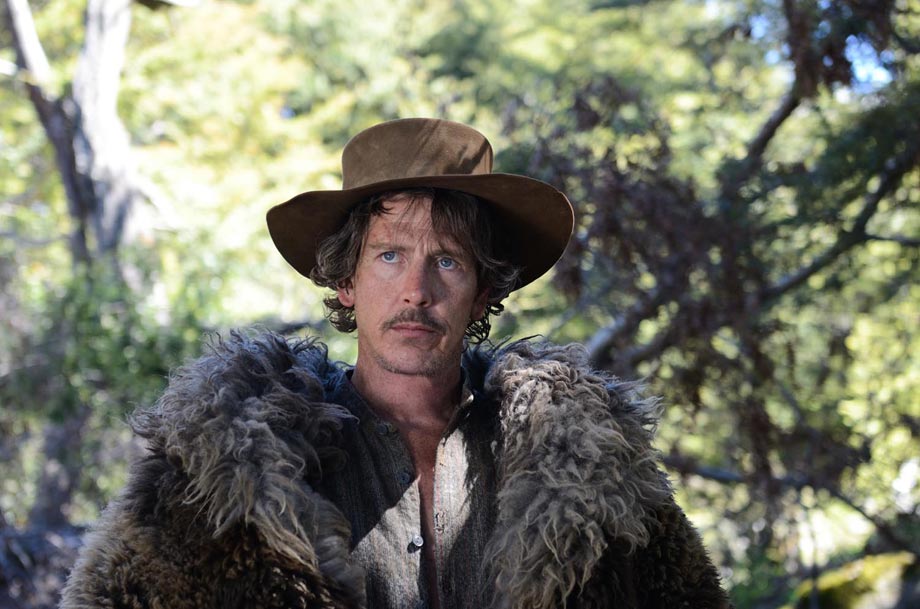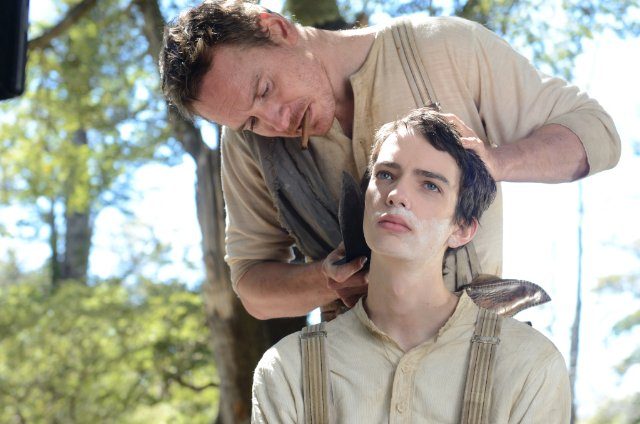

The western has a long tradition with film – and fiction for that matter. The idiom, “white hats vs. black hats,” has been shorthand for good vs. evil for a while now. The genre has evolved over the years to include more complicated characters that defied these constraints and more realistic violence. Yet even with these changes, the western is also among the most self-referential genres in film, whether to pay homage to the past or to challenge its conventions. Among the most stalwart: notions of masculinity and, of course, the nature of good and evil.
These are both in the forefront of director John Maclean’s feature debut Slow West, which stars Michael Fassbender (12 Years a Slave), Ben Mendelsohn (Killing Them Softly), and Kodi Smit-McPhee (Dawn of the Planet of the Apes). Maclean’s s west is certainly not one of the John Wayne-era black and white morality, instead filling the complicated grey space inside the triple polarity of the film’s three main players.
16-year-old Jay Cavendish (Smit-Mcphee) is a sheltered boy from Scotland on a journey west to find his friend and object of his unrequited affection, Rose Ross (Caren Pistorius, The Most Fun You Can Have Dying). After Rose’s father John Ross (Rory McCann, TV’s Game of Thrones) finds Jay under Rose’s bed. John accidentally kills Jay’s father, and the Rosses are forced to flee to the American frontier. Motivated by guilt and his love for Rose, Jay will stop at nothing to find the family.
To this point, Slow West lives up to its title a little too well, disappointing given the sleek 86 minute runtime. This all changes when gunslinger Silas Selleck (Fassbender) rescues Jay from a raider who just burned down a Native American camp. Silas imposes to accompany Jay for the rest of the trip, as Jay shows no aptitude for surviving his frontier surroundings and those it breeds. Silas is the nihilistic voice of experience to Jay’s naïve idealism. “There’s more to life than surviving,” Jay says at one point, only to have Silas counter, “Yeah. There’s dyin’.” Along the way they run into Silas’s former bounty hunting partner, Payne (Mendelsohn), who is out with his cohorts to collect the $2,000 bounty on the John Ross’s head.
While westerns often embrace that spontaneity goes hand-in-hand with violence, Slow West is one of the few that also embraces the humor that arises from chaos. Maclean acknowledges the humor even in death and tragedy, which makes for some unexpectedly funny moments, such as the makeshift use of a clothes line as a weapon. Silas’ understanding of the world includes an appreciation of the comedy of existence – there are moments he narrowly avoids death and immediately laughs about it.
While Silas seems to be the only character with no illusions about the paper-thin margin between himself and death, Fassbender makes sure he’s not a downer. Recalling the swagger he sported in Inglorious Basterds, Fassbender plays Silas as charismatic asshole in the mold of Han Solo or Tony Stark. Fassbender is clearly having fun as the center of the film’s moral venn diagram.
On the evil side is Mendelsohn as the bounty hunter, Payne. While Mendelsohn wears the hell out of a large fur coat and does everything he can with the thin material, the character is vastly underdeveloped and only shows depth when bouncing off of Silas. After their scenes together, Payne simply becomes a villain. The vast majority of his importance to the story, and his relationship with Silas, is left to audience inference. The details won’t be missed for those watching closely, thanks to some great interaction between Mendelsohn and Fassbender when they’re given the opportunity, but Payne’s role in the film after departing Silas and Jay’s company is disappointingly simplified.
On the other extreme, Smit-McPhee’s portrayal of Jay is plagued by one-note blank stare that initially suggests how overwhelmed Jay is by his new environment but never develops the character beyond his initial shortcomings. The lengths to which Jay is willing to go to prove his affection for Rose are believable, the real issue is that his performance lacks specific emotional range. For the majority of the movie, he’s either perfectly calm or else in tears, with very little in between. There’s nothing wrong with the character or his arc as conceived, but Smit-McPhee’s performance fails to adequately map the journey. A lack of nuanced progression means that by the end, he’s rushing to catch up with the emotional progression the character already ought to have accomplished.
Fassbender aside, the real star here is cinematographer Robbie Ryan, who, along with Maclean, makes New Zealand come alive as the American west the same way John Ford did with Monument Valley. While most recent westerns err toward desolate desert landscapes (those are here, too), Ryan and Maclean give credence the lush forests and fields that also make up the region. Of the recently-made westerns, Slow West might be the most beautiful, and I only hope that Maclean continues to make films as visually breathtaking as this one.
Verdict: 4 out of 5
Juxtaposing the gorgeous landscapes with the chaos taking place within them is a perfect echo for Slow West’s approach to western genre standbys. While Smitt-McPhee’s performance doesn’t hold the weight his character needs to carry the story, Fassbender is more than ready to shoulder his share of the acting weight. When combined with Maclean’s understanding of the western genre and its recurrent themes while also incorporating respect for the humor found in chaos, Slow West is a film that’s a hoot for both western aficionados and those less familiar with the genre.



